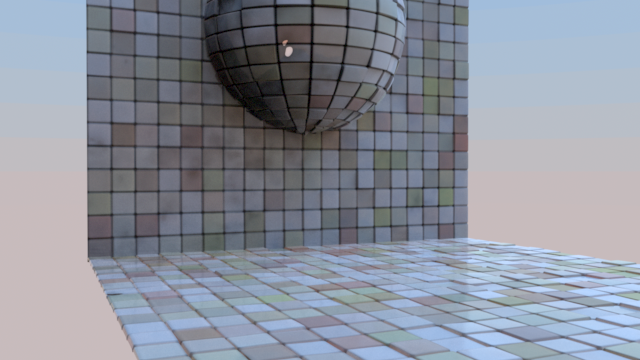Contents
PxrBump used to provide the secondary bump on displaced tiles.
Bump mapping is an inexpensive way to apply details to an object without modeling it or using displacement to change its shape. This is a shading "trick" where a supplied pattern can give the illusion of details.
This produces a bumped normal from a bump map (a scalar displacement map, so only the first channel is used for the displacement). Bumps are applied in object space. The change in scale between object space and current space is automatically applied by the node.
Texture atlas format files can be read in either UDIM (Mari) format or Mudbox format. This plugin also supports Rtx procedural texture plugins.
For performance reasons as well as visual fidelity, we prefer the use of the PxrNormalMap node along with an appropriate normal map/texture as opposed to a scalar bump map which incurs calculation overhead.
Input Parameters
Scale
An object-space scale applied to the bump.
Disabled
Turn off the bump effect, useful for debugging. Uses the geometric normal instead.
Input Bump
If Input Bump is connected (and Filename is not specified), the pattern executes the upstream pattern netowrk connected to Input Bump three times, once at the shading point and once at P+du and P+dv. Then it crosses the results to get the bump normal.
Note that if you have a fixed texture and UV, it is highly recommended to use the Filename parameter below because it is 3 times faster!
If Filename is specified, Input Bump is ignored.
Filename
The filename of the texture. If not provided, Input Bump is used instead.
If Filename is specified, the pattern has no upstream graph connected. Instead it reads the bump value from the texture file. The input file can be a color or monochrome file; if the file is RGB, only a single channel (as specified by the First Channel Offset parameter) is read. The bump pattern gets the derivatives from the texture at the same time it filters it, which provides a performance benefit over using Input Bump.
The PxrBump pattern currently does not allow modifying the manifold of the texture, use the below control.
Bump Manifold
This takes an incoming connection of the PxrBumpManifold2D
Advanced
Input Normal
An additional normal to be added to the bump normal.
Reverse Normal
Reverse the resulting normal.
Adjust Amount
Amount to adjust the normals when the geometric normals are facing away from the camera. This is useful when we see cracks in the normals. You can find an example here.
Surface Normal Mix
The amount to mix the resulting normals with the original surface normals. Toward 1.0 will mix in more surface normals. You can find an example here.
MipBias
Bias mip selection chosen for rendering to either a higher (negative integers) or lower resolution (positive integers) selection.
MaxResolution
Clamp mip selection to a preferred maximum level. This may prevent the highest resolutions from being rendered depending on your selection.
Output Parameters
resultN
The bumped normal.

